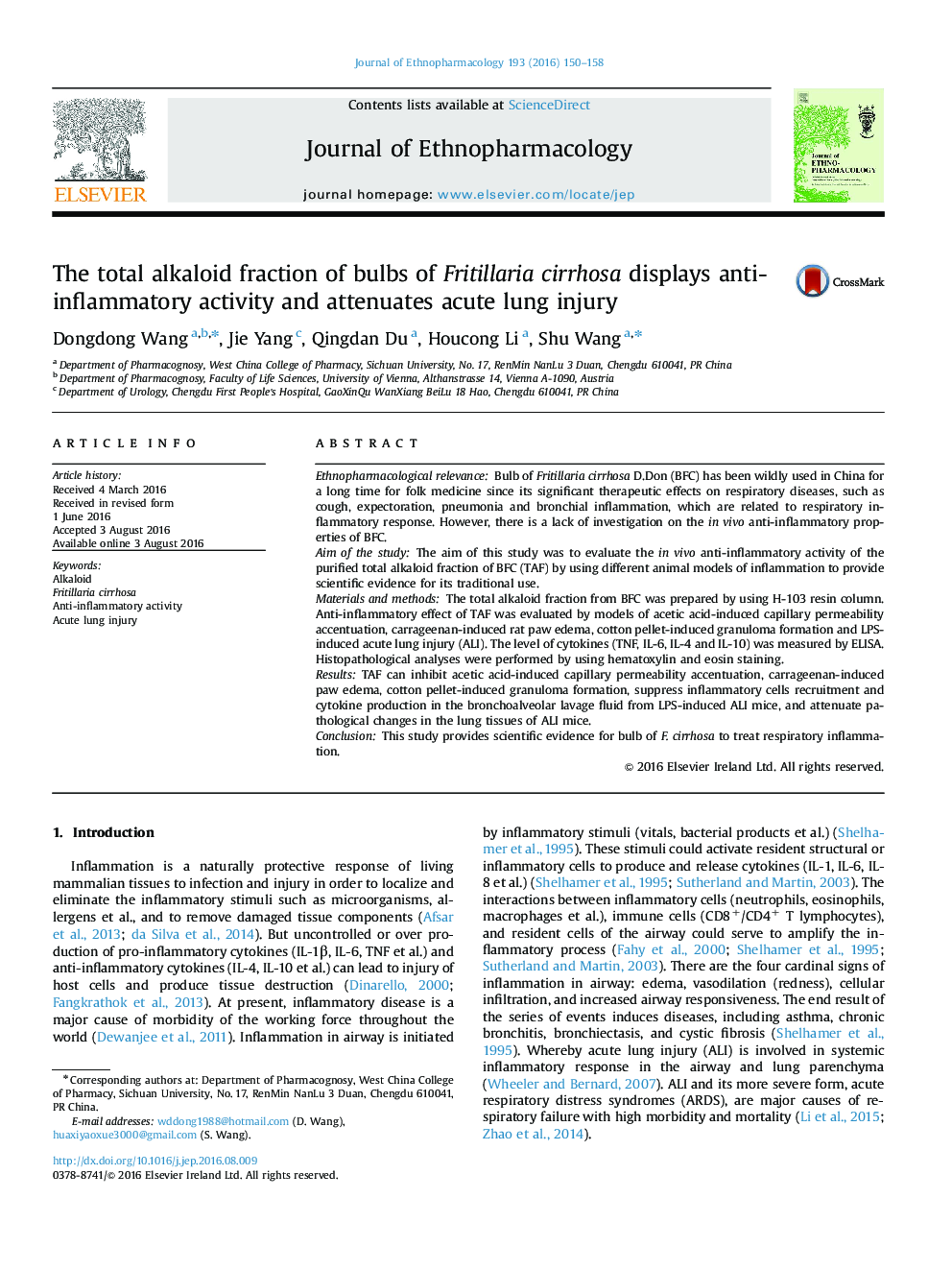| Article ID | Journal | Published Year | Pages | File Type |
|---|---|---|---|---|
| 2544622 | Journal of Ethnopharmacology | 2016 | 9 Pages |
Ethnopharmacological relevanceBulb of Fritillaria cirrhosa D.Don (BFC) has been wildly used in China for a long time for folk medicine since its significant therapeutic effects on respiratory diseases, such as cough, expectoration, pneumonia and bronchial inflammation, which are related to respiratory inflammatory response. However, there is a lack of investigation on the in vivo anti-inflammatory properties of BFC.Aim of the studyThe aim of this study was to evaluate the in vivo anti-inflammatory activity of the purified total alkaloid fraction of BFC (TAF) by using different animal models of inflammation to provide scientific evidence for its traditional use.Materials and methodsThe total alkaloid fraction from BFC was prepared by using H-103 resin column. Anti-inflammatory effect of TAF was evaluated by models of acetic acid-induced capillary permeability accentuation, carrageenan-induced rat paw edema, cotton pellet-induced granuloma formation and LPS-induced acute lung injury (ALI). The level of cytokines (TNF, IL-6, IL-4 and IL-10) was measured by ELISA. Histopathological analyses were performed by using hematoxylin and eosin staining.ResultsTAF can inhibit acetic acid-induced capillary permeability accentuation, carrageenan-induced paw edema, cotton pellet-induced granuloma formation, suppress inflammatory cells recruitment and cytokine production in the bronchoalveolar lavage fluid from LPS-induced ALI mice, and attenuate pathological changes in the lung tissues of ALI mice.ConclusionThis study provides scientific evidence for bulb of F. cirrhosa to treat respiratory inflammation.
Graphical abstractFigure optionsDownload full-size imageDownload high-quality image (343 K)Download as PowerPoint slide
